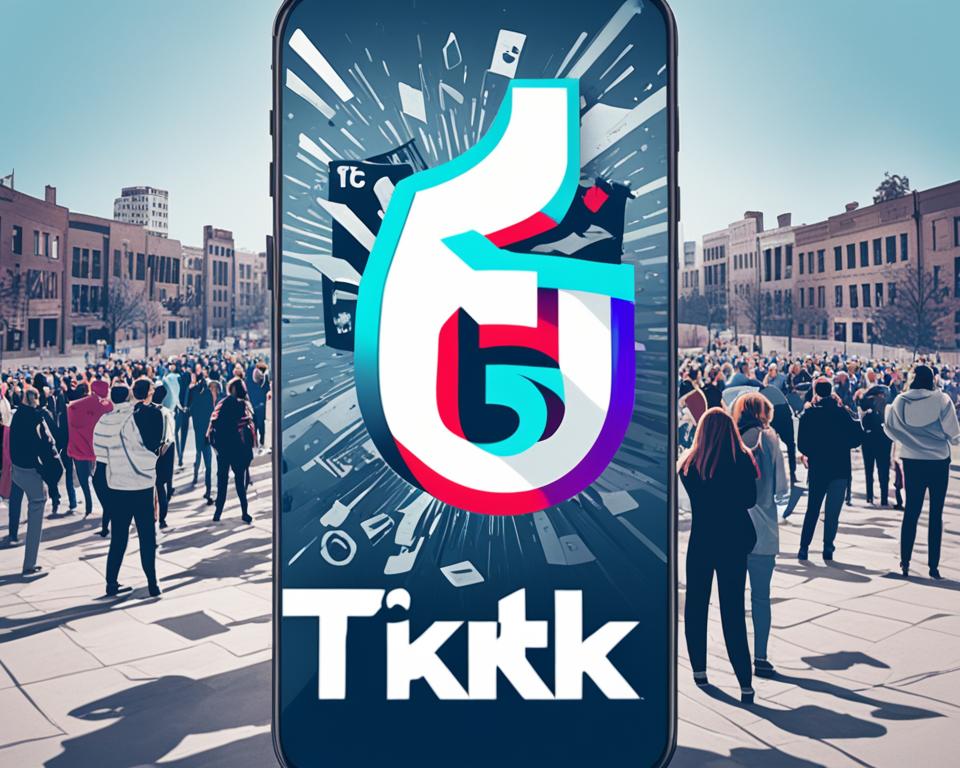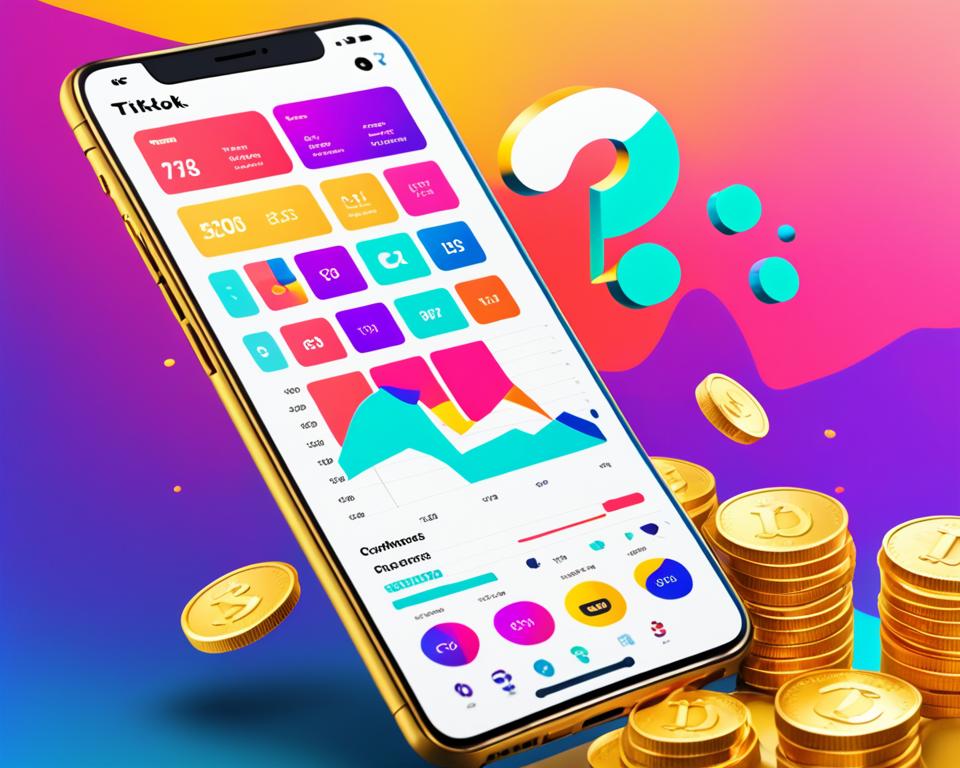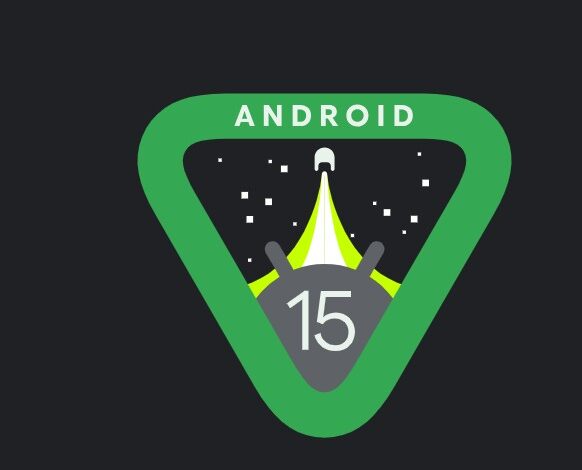
tiktok get banned in the usa tiktok worth 2024
TikTok’s Uncertain Future in the USA and Its Estimated Value in 2024
Amid the vibrant digital dance floors and creative corners of TikTok, an air of uncertainty lingers over the app’s place in American cyberspace. TikTok’s uncertain future in the USA has gripped its many stakeholders, from zealous users to meticulous market analysts, all pondering what tomorrow holds. With whispers of policy and power steering its course, TikTok navigates through complex tides as the country weighs national interests against the innovative spirit that the platform encapsulates.
As 2024 approaches, experts are turning their gaze towards the tiktok estimated value 2024, seeking to pinpoint a number amidst the swirling speculations. This estimation is not merely an exercise in foresight but a barometer of the platform’s robustness facing regulatory storms. The tumultuous but tantalizing journey of this social media giant begs the question of what tiktok future prospects might look like in a market where unpredictability seems the only guarantee.
As discussions intensify and opinions diverge, the vibrant community of TikTok awaits an outcome that could redefine the digital landscape of tomorrow. Stay tuned as we delve deeper into TikTok’s tale of potential and predicament in the heart of the USA.
TikTok’s Rise to Stardom and the Specter of a Ban
The journey of TikTok from a fledgling app to achieving tiktok rise to stardom has been nothing short of meteoric. Creating a cultural phenomenon, especially among Gen Z, the app’s format has revolutionized the way users interact with short-form video, setting music and trends at the core of its identity. It’s this innovative nature that has fueled tiktok popularity, transitioning it from a niche platform to a mainstream powerhouse of viral challenges and creative expression.
However, the platform’s extraordinary reach and affiliation with its Chinese parent company, ByteDance, hasn’t escaped critical eyes. The platform’s data handling processes and potential exposure to regulatory risks have been a central theme in tiktok ban discussions. Lawmakers and regulators have cast a discerning eye over TikTok’s operations, considering whether its practices conform to the stringent data privacy norms expected in the United States.
As TikTok continues to weave itself into the social fabric of daily life, the dialogue around its longevity and freedom to operate within the U.S. intensifies.
- The dazzling ascent of TikTok as the go-to platform for short, catchy, and shareable content.
- Increasing tiktok popularity amongst a demographic that prizes innovation and social connectivity.
- Serious considerations and regulatory reviews raising the prospects of a potential ban.
- The ongoing tension between commercial success and national regulatory compliance.
It is in this environment that TikTok’s narrative continues to unfold, a tale of digital innovation shadowed by the complex geopolitics of global tech stewardship. The hope for many avid users and creators is clear — for TikTok to navigate these discussions positively, maintaining its spot at the zenith of social media stardom.
The Timeline of TikTok’s Legal Challenges in the US
With its sweeping popularity and unique content format, TikTok has unquestionably transformed the landscape of social media. However, this transformation has not come without significant legal hurdles. The journey through the labyrinth of tiktok legal challenges is as complex as it is intriguing, unveiling the multifaceted relationship between innovative technology and regulatory frameworks.
Initial Concerns and Governmental Scrutiny
It all began with the bubbling up of various concerns from lawmakers who questioned TikTok’s data privacy policies. The tremor of unease morphed into a full-blown quake of tiktok government scrutiny when national security was flagged as a potential risk. Agencies across the board began to take a deeper look into the app’s handling of user data and its alleged ties to foreign governments.
Inspections and critiques evolved into action when the Administration expressed intentions to regulate or even outright ban the platform in the United States, signaling a critical moment in TikTok’s timeline.
Critical Legal Battles and Executive Orders
The palpable tension between TikTok and the U.S. government eventually led to the issuance of tiktok executive orders. These orders, coming straight from the highest office, were aimed at prohibiting the app due to the perceived threats they presented. Yet, what followed was a series of judicial disputes that saw the executive orders meeting resistance in courtrooms, highlighting the legal complexities in the digital age.
As we trace the pathway through these orders and subsequent legal skirmishes, we uncover not just the narrative of a company’s struggle but also the broader discourse on privacy, international dynamics, and the scope of executive power.
Predicting TikTok’s Market Worth in 2024
Amidst swirling discussions around the digital phenom, TikTok, predicting its market worth by 2024 necessitates diving deep into a blend of analytics, consumer behavior, and geopolitical landscapes. Analysts toss around figures and scenarios, drawing from TikTok’s current user enthusiasm and revenue generation patterns. Yet, looming regulatory maneuvers cast a shadow of unpredictability over the tiktok valuation. These facets marry to forecast the platform’s financial destiny.
Engagement metrics paint a picture of unwavering growth for TikTok, as the platform deftly holds the flag high in the digital arena. Continually outstripping competitors with its innovative content delivery, the app’s high retention rates feed directly into its upwardly spiraling valuation. Industry insiders project further expansion, solidifying opinions regarding an enticing tiktok future projection.
Yet, the specter of regulation looms large, placing a question mark on any projected figures. How will the app navigate the stern face of governance without curtailing its vibrant user base or innovative edge? Esteemed market researchers and tech pundits alike chip away at these nuances, contemplating the following:
- Approaches to monetization and diversification of revenue sources
- The evolving sentiment towards data privacy and its global ripple effects
- Potential partnerships and market expansions
“While forecasting the exact tiktok market worth 2024 may be akin to crystal-ball gazing, it’s the fusion of user affinity, nimble adaptation, and global dynamics that will steer TikTok’s fiscal voyage.”
In summary, peering through the looking glass for TikTok’s future equates to balancing empirical data with a hearty dose of educated conjecture. While numbers on a spreadsheet may tentatively underscore TikTok’s financial heft in the coming years, the unpredictability of market forces and regulatory frameworks will have the final say.
TikTok’s Worth in 2024, When Will TikTok Get Banned in the USA, Who Owns TikTok
Assessing TikTok’s worth in 2024 requires a multi-faceted approach that takes into account user engagement levels, revenue projections, and evolving market scenarios. With the digital landscape rapidly changing, TikTok’s adaptive strategies and its ability to maintain a robust user base are key indicators of its future valuation.
As stakeholders and observers debate the tiktok ban timeline USA, the predominant uncertainties stem from ongoing legislative discussions and escalating concerns regarding data privacy. Any potential ban could have a cascading effect, not just on the app’s accessibility, but also on its market valuation.
Forecasting the outcome of political deliberations and policy implementations is challenging, yet the timeline for any possible restrictions on TikTok will greatly influence investment and user trust.
The discussion around TikTok ownership details is equally significant. Currently, ByteDance, a Beijing-based company, holds ownership, which has triggered extensive scrutiny due to geopolitical tensions. Transparency in ownership and potential restructuring could play a pivotal role in allaying fears and stabilizing TikTok’s market standing.
- Understanding user retention and its effect on long-term revenue.
- Analyzing the impact of a potential ban on TikTok’s user base and partnerships.
- Exploring ownership details and the international business dynamics of ByteDance.
Amidst these discussions, TikTok continues to be a platform where creativity blooms and communities form, thereby holding significant social influence, which is a crucial asset when assessing the app’s valuation.

Comparative Analysis: TikTok’s Value Versus Competitors
In the dynamic terrain of social media platforms, a tiktok value comparison with its closest tiktok competitors delivers a fascinating narrative of market trends and strategic positions. Understanding tiktok market share is crucial not only for investors and analysts but also for brands and content creators who wish to stay ahead in the digital arena.
When we delve into the comparative analysis, several factors emerge. Firstly, user base growth is pivotal. TikTok’s meteoric rise in user acquisition has been unparalleled, parading a youthful demographic that voraciously consumes and creates content. Yet, how does this growth translate when laid side-by-side with rivals like Instagram, Snapchat, and YouTube, who have also carved significant niches in the market?
- Instagram reels in a diverse audience with its evolving features, though its engagement metrics show a more dispersed pattern of interaction.
- Snapchat remains favored among teenagers for its privacy-centric and ephemeral content, a domain where TikTok is rapidly gaining traction.
- YouTube, with its expansive content library and sophisticated monetization avenues, commands a powerful position in terms of long-term user engagement and revenue generation.
An undeniable facet of this comparison is the role of innovation in maintaining a competitive edge. As
TikTok turned heads with its algorithm-driven content curation, it set a benchmark for personalization that other platforms are striving to emulate.
However, measuring the immediate value linked to these competitive traits is only part of the narrative. The sustainability of these platforms, including TikTok, will invariably depend on their adaptability to the evolving landscape of legal standards, market demands, and user expectations.
- Analyzing engagement levels provides insights on user retention and time spent on the platform.
- Revenue generation, through direct ads and partnerships, underscores the platforms’ financial potency and attractiveness for business collaborations.
In summation, the compelling tiktok competitors narrative is writ large on a tapestry that features creative prowess, agility in market adaptability, and the forging of enduring user relationships. As this analysis unfolds, the shaping of tiktok market share remains a testament to the digital ballet of strategy and innovation.
Examining TikTok’s User Engagement and Revenue Streams
Delving into the realm of TikTok reveals a vibrant ecosystem where tiktok user engagement and compelling content are paramount. By understanding the intricate details of user participation and the sources fueling TikTok’s income, we can forecast the platform’s financial trajectory and its ability to sustain a thriving creative community.
User Demographics and Growth Patterns
Critical to TikTok’s success is its appeal across various age groups, particularly attracting the younger generations who resonate with the app’s dynamic and intuitive interface. As we analyze these demographics, data indicates a surge in usage among adults as well, highlighting TikTok’s incredible ability to adapt and appeal to a wider audience. This expansion positions the app to capitalize on diverse tiktok revenue sources and growth opportunities in global markets.
Focusing on the characteristics that keep users scrolling, the secret to TikTok’s growth can be seen in its algorithm’s power to hook and retain attention with highly personalized content feeds.
Monetization Strategies and their Effectiveness
When it comes to tiktok monetization, a blend of innovative advertising formats and in-app purchases forms the backbone of its revenue model. By offering a variety of options like branded hashtags, filters, and the ability to tip creators, TikTok has created a multilayered economy within its platform. Furthermore, considering its impressive engagement rates, marketers are inclined to invest more in reaching TikTok’s captive audience.
- Sponsored Content: Partnerships with creators generate authentic content that resonates with their followers, driving brand synergies.
- Virtual Goods: In-app currency and gifting mechanisms provide a direct income stream that encourages ongoing user involvement.
- TikTok For Business: A suite of tools that offers businesses detailed insights and analytics to maximize their campaigns’ effectiveness.
As TikTok continues to diversify its offerings, the interplay between user engagement and financial outcomes becomes more pronounced, with the platform steadily paving the way for novel and lucrative e-commerce integrations.
In essence, TikTok has harnessed the intricate balance of providing a compelling user experience while implementing robust revenue generation tactics. The future outlook for their revenue potential remains promising, as long as the platform continues to evolve and adapt to the ever-changing digital landscape and user preferences.
The International Impact of a Potential US Ban on TikTok
The possibility of a TikTok ban within the United States extends its ripples far beyond the nation’s borders, stirring the waters of the tikTok global market. Should such legislation come into effect, the implications for the platform’s vast tiktok user base are considerable. Users far from American soil watch closely, understanding that the tremors could disrupt the social media landscape internationally.
Consider the numbers – TikTok boasts a user base that spans many countries, making it a truly global entity. A US ban could signify shifting tides in consumer confidence and prompt similar actions in other countries, potentially contracting tiktok global market share. The platform’s rich tapestry of international content could face fragmentation, stifling the cross-pollination of cultural trends that have come to define it.
The interconnectedness of our digital age means that shockwaves from a single market can lead to a domino effect in the global economy. The international impact of a tiktok ban could be a stark lesson in digital interdependence.
The tiktok user base itself is not a monolith. It is an amalgamation of diverse demographics, each segment with its unique engagement patterns. A ban could prompt other platforms to swoop in, eager to claim a share of TikTok’s user pie, thereby redrawing the competitive landscape.
- Selective ripple effect in international markets wary of similar privacy concerns.
- Alternative platforms gaining ground as users seek replacements.
- Creators and brands recalibrating strategies to align with new realities.
In dissecting the possible outcomes, one cannot overlook the tiktok ban international impact on the digital economy at large. Content creators and brands that have invested heavily in TikTok as a medium for outreach are bracing for change, pondering their next move. Consequently, the digital marketing ecosystem remains on high alert, ready to pivot strategies according to the shifting sands of online legislations.
Corporate Reaction to the Threat of TikTok’s Ban
In the face of mounting pressure and the looming shadow of a U.S. ban, TikTok and parent company ByteDance have been stirred into action, crafting a multi-pronged corporate response to address the complex challenges ahead. Employing a blend of strategic outreach and legal acumen, their aim has been to navigate through the precarious situation borne of escalated regulatory scrutiny.

Lobbying and Legal Strategies
In an era when corporate advocacy shapes policy decisions, tiktok lobbying efforts have intensified. The platform’s executives and legal teams are working tirelessly behind the scenes, meeting with key policymakers, supporting legislation that favors their business model, and pushing for a dialogue that highlights the app’s contribution to the digital economy and cultural landscape. The primary goal is to thwart the tiktok ban corporate response that would undeniably shake the app’s expansive user community.
Contingency Planning for Future Operations
Parallel to these efforts, there is a keen focus on tiktok contingency planning. The company is examining various scenarios, ranging from potential partnerships with U.S.-based firms to a full-scale structural overhaul to protect its operational presence in the market. Contingency measures could include the ring-fencing of data to alleviate national security fears or a possible sell-off to a U.S. entity to help preserve the app’s bustling ecosystem.
- Engaging with industry stakeholders to reinforce the app’s value proposition
- Auditing internal data security measures to address concerns preemptively
- Developing technology solutions that could satisfy regulatory demands
- Exploring alternative markets to offset any negative impact from U.S. restrictions
The stakes are high, and the clock is ticking. With each move highly scrutinized by both the government and the public, TikTok’s leadership must tread carefully, ensuring they strike a balance between growth and compliance in this rapidly evolving digital era.
User Perspectives on TikTok’s Possible Ban in the USA
The vibrant community on TikTok has voiced varied sentiments regarding the platform’s uncertain future. As discussion intensifies about the possible ban in the USA, tiktok user perspectives reveal a blend of defiance, disenchantment, and apprehension. Surmounting all is a concern for how this potential ban could restructure the digital social space, invariably changing the landscape of short-form video content.
General User Sentiment and Concerns
Humming beneath the surface of TikTok’s playful exterior are concerns about the tiktok ban impact on everyday users. Opinions range from fervent opposition to an ambivalent sense of inevitability. Some see the proposed ban as an infringement on their freedom of expression and are vocal about preserving the diversity of voices TikTok houses. Others worry about the dissemination of information, as the app has become an unconventional but crucial source of news and global interaction. The loss, users fear, would be more than just content—it would be a community and a significant node of cultural exchange.
Impact on Content Creators and Influencers
For tiktok content creators and influencers, the potential ban looms not merely as a disruption but as an existential threat. These individuals have forged careers and communities within TikTok’s walls, leveraging its algorithms to showcase their creativity and sustain their livelihoods. The ban’s impact would ripple beyond their personal sphere, affecting the broader ecosystem of followers, brand partnerships, and cross-platform content strategies. Creators express a mix of determination to adapt and concern for the unique connections they’ve built, which the platform uniquely facilitates.
In summary, the echoes of concern among TikTok’s passionate user base and the content creators who rely on its infrastructure underscore the platform’s importance beyond mere entertainment. Any decision on its fate in the USA is bound to leave a lasting impression on a socially interconnected generation.
Understanding Government Concerns: National Security vs. Free Speech
The intersection of tiktok national security worries and the tiktok free speech debate is a labyrinth of complex legislative and ideological considerations. By digging into tiktok government concerns, we unveil a nuanced narrative that reflects the core of what is at stake: the balance between safeguarding the nation and upholding the right to free expression.
As the digital arena becomes a battleground for influence, the crux of the issue lies in whether a platform can be both a tool for creativity and a potential threat to national interests.
At the heart of the matter is whether the data harvested by TikTok could compromise American interests or individual privacy. To address these apprehensions, legislators must traverse a minefield where every step—a policy, a mandate, or even a ban—resonates with far-reaching consequences on free speech.
- Delineating the scope of tiktok national security concerns requires thorough scrutiny of data practices and potential foreign interference.
- The tiktok free speech debate hinges on whether regulatory actions would inadvertently stifle the vibrant exchange of ideas and creativity that TikTok fosters among millions of users.
- Understanding the gravity of tiktok government concerns entails recognizing the platform’s unprecedented influence and its implications for global communication and culture.
Thus, the ensuing dialogue is more than a policy dispute—it is a reflection of fundamental values at the intersection of technology, governance, and the rights of citizens in the digital epoch.
As this conversation evolves, it remains imperative not only to safeguard national interests but also to ensure that the measures taken do not quash the freedom that defines democratic societies. Through an informed and deliberate approach, it is possible to chart a path that respects both national security imperatives and the sanctity of free speech.
Is TikTok Getting Banned in the US?: Sorting Fact from Fiction
The digital conversation surrounding the tiktok ban rumors is rife with conjecture, but when we shift our focus to tiktok ban facts, the picture becomes clearer. Among the tumult, a standout moment was the legislative action taken by the US Senate, with a decisive 79-18 vote that moved to potentially restrict TikTok’s operations in the US. This legislative step was predicated on the condition that ByteDance must divest its interests in TikTok or risk a national ban. The timeline provided to ByteDance spans nine months, subject to a conditional 90-day extension here’s what to know.
As the tiktok legal status in the United States teeters, it is important to recognize the app’s substantial user base. With over 170 million users in the U.S. and 200 million in India, TikTok’s global imprint is impressive. Notably, India set a precedence by including TikTok in a sweep of bans against several Chinese-owned apps four years prior. If history is an indicator, it shows that such actions are within the realm of possibility and can have a monumental impact on companies and users alike.
The possibility of a TikTok ban in the U.S. is a developing narrative with January 2025 marked as a critical juncture. This is the date from which TikTok might find its operations legally obstructed, although the prospect of legal challenges could delay any definitive action. It’s important not to overlook the 18 Senators who opposed the bill, signifying that the discussion around TikTok’s future in the US is nuanced and far from unanimous.
As with any political discourse, information and misinformation coexist in a delicate balance—the task at hand is discerning one from the other. For the truth-seekers, analyzing the legislation, scrutinizing the official data, and understanding the geopolitical landscape will be critical in separating valid concerns from unfounded fears.
Conclusion
As we evaluate the future of TikTok, the landscape within the US remains as dynamic and multifaceted as the platform itself. Matured from its former status as the most downloaded app on the Apple App Store to a social media juggernaut, TikTok has not only surpassed two billion mobile downloads globally but is navigating an ever-evolving ecosystem of digital engagement and regulatory scrutiny. The platform’s advertising revenue, bolstered by an 11% growth in March 2023 and top spenders such as Pepsi and Apple, signals robust commercial opportunities despite the looming uncertainties.
Projected to generate $14.15 billion in revenue in 2023, TikTok’s trajectory portrays an app in its ascension, surpassing its previous year’s figure of $9.89 billion. User engagement continues to be a pillar of its monetization strategy; the platform reached a significant milestone with 1 billion users in September 2021 and maintained its monetization rate in the American market at $0.31 per hour. However, with reports of stagnating growth by The Wall Street Journal and questions concerning the outcomes of a potential ban, the app faces the dichotomy of pursuing further expansion and navigating the uncertain regulatory environment in the US.
The conversation surrounding TikTok’s conclusion in the US market often gravitates towards its sensational growth and the shadow of potential legislative action. With strategic moves—like signing deals with major music labels and venturing into the e-commerce and gaming sectors—TikTok seeks to diversify its offerings and integrate more deeply into its users’ lives. Nonetheless, the app’s future, much like the short-form videos that populate its platform, is intricate and unfolds in rapid, often unpredictable sequences. The synthesis of user preferences, corporate strategies, and governmental intervention will ultimately dictate the conclusion of TikTok’s ambitious narrative.














